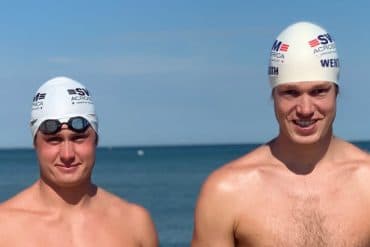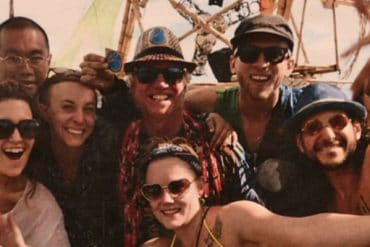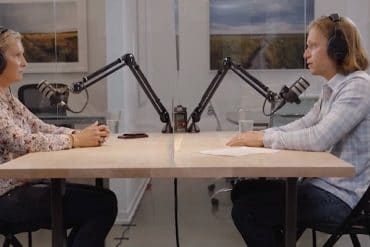 Emerging from his quaint cottage in ’Sconset, Tom Mulholland has the look of a wizard who just stumbled out of The Lord of the Rings. With his long gray beard, white ponytail, and hand-hewn walking stick, Mulholland’s fairy-tale appearance is made all the more enchanting with Houdini on his arm, an old peregrine falcon he raised from a fledgling to hunt pheasants and rabbits in the forests and moors of Nantucket. When it comes to taming these wild birds of prey, Mulholland is in fact something of a wizard. He’s taught several Nantucketers the ancient art of falconry over the course of his many years on the island, including to Chris Bonelli, with whom Mulholland guides falconry tours on Nantucket.
Emerging from his quaint cottage in ’Sconset, Tom Mulholland has the look of a wizard who just stumbled out of The Lord of the Rings. With his long gray beard, white ponytail, and hand-hewn walking stick, Mulholland’s fairy-tale appearance is made all the more enchanting with Houdini on his arm, an old peregrine falcon he raised from a fledgling to hunt pheasants and rabbits in the forests and moors of Nantucket. When it comes to taming these wild birds of prey, Mulholland is in fact something of a wizard. He’s taught several Nantucketers the ancient art of falconry over the course of his many years on the island, including to Chris Bonelli, with whom Mulholland guides falconry tours on Nantucket.
Mulholland first learned falconry, also known as hawking, from an old-timer he met in Boca Grande, Florida, fifty years ago. He left Florida in the summer of 1987 for a roofing job on Nantucket, where “they were paying one hundred dollars a square!” “That fall, all kinds of birds came through here, man, and I stayed,” Mulholland says. “There would be peregrines coming through, there would be merlins coming through. I mean, some falconers would give [any- thing] to see that. I mean, they really would.”
Falconry spans back thousands and thousands of years, so far back in fact that historians don’t know exactly when humans started using raptors to hunt. They are in agreement, however, that two thousand years before Christ, falconry found a foothold in China and the Middle East, before flocking to parts of Europe where it became a celebrated sport of nobility. “King Frederick II [Holy Roman Emperor in early 13th century] wrote the first treatises on falconry,” Mulholland says. “He was sent by the pope to Jerusalem in the first Holy War, [but there was] no war, no one got killed. His counterpart, a Muslim, was a falconer, and so was King Frederick. They talked birds. They exchanged ideas and different ways of training, and [in the end] King Frederick traded his daughter for two gyrfalcons.” Mulholland laughs. “Those were the real diplomats, man, you know what I’m saying?”
Mulholland now has two raptors: his trusty twenty-six-year-old falcon Houdini, and a young red-tailed hawk named Shaka Zulu that he caught this past spring. The master falconer no longer hunts Houdini, on account of the cataract in the bird’s eye that came when another raptor attacked him in the sky. This hunting season is all up to Shaka Zulu, whom Mulholland plans on releasing back to the wild this spring. “This guy I’m trying to keep as wild as I can, just tame enough for me to work with, but I don’t want him to become social with me.”
As the hulking red-tailed snacks on frozen quail from Mulholland’s gloved hand, it’s a wonder the bird doesn’t attack the old man. “He knows I’m too big to eat,” Mulholland says. “Because he’s a wild bird, he has a certain amount of fear that will always be there.” But “if you take a bird from the nest, it has no fear, and you’re nothing but a big marshmallow. A young bird taken from a nest can be the most difficult bird in the world. They’re not afraid of nothing.” Mulholland knows this from experience, having raised Houdini from a fledgling raptor. When Houdini was injured, he became domesticated. “Because we had him around the house, he started getting real social with me,” Mulholland says. “He started trying to breed on my head every time spring came around.”
The falcon-falconer relationship circles on one thing: food. The key is to monitor the bird’s diet meticulously so that when it is time to hunt, “they don’t want to eat; they gutta eat,” Mulholland says. If you feed the bird too much, it will become lazy and complacent, and will not hunt. “You can’t do a goddamn thing with a fat hawk, except lose your mind,” he says. “You must watch their weight.” 
To locate their prey, Mulholland’s beagle, Chase, dives into the brush and gets on the scent of a rabbit or pheasant. “With the dog, the bird becomes like an athlete. You can take a couple rabbits a day if you wanted to,” Mulholland says. “When you introduce a dog to the mix, it also becomes much more civilized, man. You don’t have to go into the bush. You can just kick back.” When Chase gets on the scent, the beagle starts squealing. Mulholland raises his gloved hand, prompting Shaka Zulu to take flight. He floats in the sky, circling and waiting to pinpoint its prey. Then the red-tail flutters to a stop, closes its wings, and dive-bombs the ground. “The red-tail will land on a pheasant’s back, and if they can’t get a good grip, their wings beat so quick that it’s like getting peppered by Mike Tyson,” Mulholland says. Other birds will go directly for the head, killing their prey instantly with their powerful talons. Each bird develops its own hunting style.
“It brings out the hunter in you. It brings out the life-and-death struggle,” Mulholland says. “You’ll see stuff that if you were a naturalist it may take you a lifetime to see—and you’re seeing it every day. Flying the bird, you don’t need anyone’s approval. It’s between you and God, man.” Indeed, being on the hunt with Tom Mulholland and his hawk is something of a spiritual experience. Three years ago, the falconer was diagnosed with cancer, and his take on his passion has evolved accordingly. “I realized life sure looked different going out than it did coming in,” he says. “One of the biggest joys I had was flying birds, man. That’s how you have to count your wealth, on the things that are natural, the things that you discover, that you treasure. I’d love to get people out there just to experience it.”
To experience falconry for yourself, look up Tom at Nantucket Hawking and Falconry, (508) 257-4328, www.nantuckethawkingandfalconry.com.





